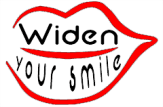TMJ/TMD Symptoms: Headaches –  Migraines
Migraines
Headaches are one of the most common symptoms of a TMJ (temporomandibular joint) problem. 90% of all headaches are tension headaches. The TMJ headache is a tension type of headache, often described as a migraine headache.
There are a few TMJ-related causes for tension headaches. Constant contraction of muscle fibers within a muscle create tension, pressure or a tight feeling in the face and head. Running through these constant tight muscle fibers are nerves, blood vessels and lymphatic vessels. This constriction reduces blood flow to that area, causes pain or prevents drainage. The body sends more blood to the areas. This results in an increase in general blood pressure to the muscles and head, sometimes referred to as vascular headaches. Clenching and grinding the teeth produce a headache pain from the muscles in the head . Furthermore, there are muscles in the neck that are attached directly to the brain covering which can cause a direct headache.
Unfortunately, these headaches are so frequent or severe that they are misdiagnosed and treated as migraine headaches.
Medications, the medication that block signals from the nerves to the muscles, brain surgery or muscle and psychological therapy can block muscle headache pain. But the cause of the disease and damage from the bad bite, will persist. Medications have side effects, brain surgeries have complications, and muscle or psychological therapy have limited results and still do not correct the source of the problem. The medication that block signals from the nerves to the muscles is a problem because the body will create new muscle fibers to try to correct the jaw imbalance and make the other muscles work harder to do the muscle that was injected, once the medication wears off, the extra fibers cause more imbalance. Physiologic dentistry ensures the muscles are happy because they do not have to work hard positioning the teeth to a strained bite.
Physiologic dentistry can alleviate most headache problems related to TMJ, muscle, nerve and joint disorders by putting the temporomandibular joint back into alignment and placing the jaw into its optimal position.
 | Dr. Ronald Widen
| Dr. Ronald Widen